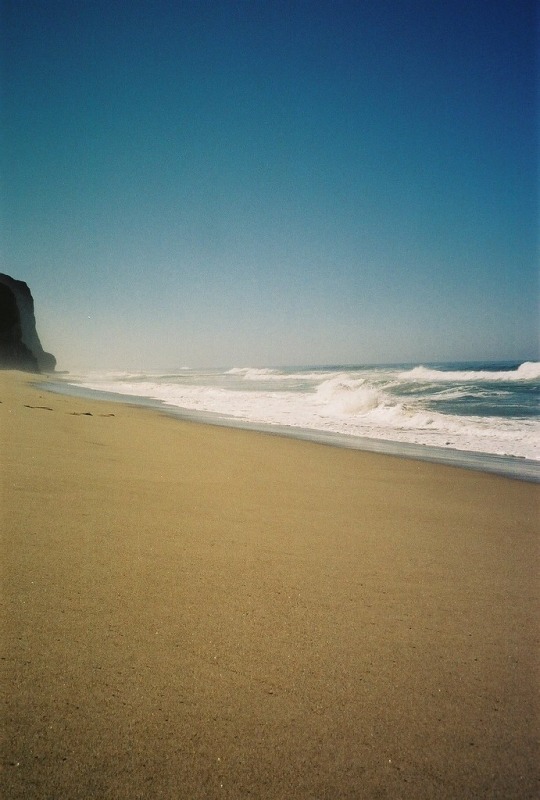and every one of them is sufficient.kofimore links & about
Last active 4 hours ago
Don't wanna be here? Send us removal request.
Text
here's a reminder that men can and do make bad art. eric kripke. john shiban. brad buckner. andrew dabb. daniel loflin. adam glass. robert singer. robert berens. jensen ackles.
197 notes
·
View notes
Text
Can I offer a reframe of the common "write the shitty first draft" advice? I like that advice a lot but I think the way it's often presented bounces off a lot of people and activates shit that does not help writing happen.
I think of the first draft as an armature.
If I was making a beautiful bronze statue, I would need to make a clay model first. And, depending on the shape, before I even got out my clay I would need to get some good thick wire and create a basic shape for the clay to adhere to, so it doesn't all fall down. Once I have this essential 3D wire frame, I can start building and subtracting and refining.
But if I try to refine on just clay, it won't have enough of a core to hold it up. I'll sculpt a beautiful hand only to have the whole arm fall off and go smush.
The armature isn't the sculpture. It is the frame you build the sculpture around.
The first draft isn't the novel, it's a sort-of-novel-shaped thing that will hold up everything you build and beautify later.
Write the armature draft. Try to make it a good armature, instead of trying to make it a good novel before it's ready.
649 notes
·
View notes
Note
I did love house of leaves when I read it, but I also found it kind of weird how slavery is never mentioned. I'm not American, though, so maybe I lost some subtext? Anyway, I would love to hear your thoughts on the matter once you finish the book!
This is going to be long. The more I think about it, the more I’m just kind of stunned at the extent to which the architecture as grief and haunting and trauma and history book completely doesn’t at all address the fact that the house in question is a plantation. Two story three bedroom houses built in the 1720s in Tidwater Virginia right next to the James River are not anything else.
They talk a lot about how it’s haunted by Virginia history, but exclusively contextualize it in the story of the lost colony of Jamestown and the starving time and the pain of white settlers, which aligns with the house-as-frontier motif that characters like Holloway and Wax fit into. The Navidsons and Holloway and the Jamestowners all go to a new place in hopes that it will change them but instead, it really only reflects them in a positive feedback loop that is ultimately self-destructive. 
There is no mention of Jamestown as the place where slavery started in the United States. There is no discussion over who would’ve built the house built in 1720 even though there’s only one answer.
I think this itself can work as a metaphor for how the state of Virginia deals with its own history in terms of modifying it without acknowledging any of the darkness and evil that it took to build it. The book does straight up do this but again only in the context of white settlers.


The sentiment expressed here about colonial Williamsburg is real similar to how I feel about the Navidsons moving into a plantation house built in 1720 that has been recoded and reinterpreted as a sanitized cookie cutter nuclear family single home whose dark past on that front goes completely unremarked upon. But he’s talking about Williamsburg omitting the starving time and brutal struggle of the British colonial project instead.
I’m still really struggling to wrap my head around why any discussion of slavery or race is omitted in this book about architecture and haunting and Virginia. “There’s an integral part of this house that we do not talk about or acknowledge, but it’s in here with us and we are haunted by it” while living on a plantation feels like a setup that is so obvious to me in a way where I kind of have to wonder if its omission is deliberate. I think if you want to be generous you can make the argument that some of it is metacommentary on the silence of white inhabitants and interpreters of spaces like these?
White academics often have deliberately cultivated blind spots for this sort of thing where in the book thousands and thousands of academic journals are written dissecting every aspect architectural and metaphysical of the house as well as Navidson’s pain and trauma while the pain, suffering, and entire presence of enslaved laborers who built the house is a non-entity in the story. In the universe of the book people have called Karen Green‘s 87 affair partners to ask about her psychological state as a child and no one has written on who built the house. 
I think if we’re talking about space and place it’s also worth pointing out that contrary to popular (white) interpretations of the history of slavery, enslaved people not only built plantation houses, but also inhabited parts of them as well when forced to perform domestic labor in lieu of or in addition to agricultural labor. I say this because who and what is living in the house is a really big element of the book. It’s not just the structure and architecture of the house of leaves that gets remarked on, but also the presences and absences within it. The misconception that all enslaved people lived separately is often used by white historians to get out of having to talk about slavery and architecture altogether. No one in the book at any point considers any of the inhabitants of the house that weren’t previous presumably white owners.
There are a lot of white Virginians who have a tendency to pretend like local architecture just kind of manifested itself into the world (see: Monticello getting interpreted as like a Jeffersonian genius brainchild when the blueprints are quite sparse enslaved architects designed the house.) Similarly, at one point in house of leaves one of the sources used insinuates that white settlers just happened to find it in 1610.
Using the history of the house exclusively as a selling point or interesting fact like the realtor who sold the house to them did while they contextualize it as this bucolic white suburban getaway fresh start reminds me of the many plantations I’ve been to in Virginia that recontextualize and commodify themselves for white audiences as other things whether that’s “restorations” that anachronistically reinterpret slave, housing as “sharecroppers cabins” or “guest houses,” or plantations branding themselves as bed-and-breakfasts, wedding venues, or single-family houses. 
But on the other hand, it’s really hard when every other aspect of the house and its structure and its meaning and it’s history EXCEPT its historical context about slavery goes explored or commented on by the Davidsons or the academics interpreting this documentary or Zampano interpreting the academics or Johnny Truant. Why isn’t who built the house a bigger deal?
TLDR: Complete total lack of commentary about slavery in the architecture and trauma book where they live in a plantation house is definitely of reflective of the pattern of erasure of black trauma and accurate history from academic and architectural spaces. Whether that’s deliberate commentary on erasure or just wholesale participation in it is up in the air for me.
209 notes
·
View notes
Text
[“In earlier periods, the household had been the center of production, both for its own consumption and for local barter. Storekeepers, merchants, and laborers received much of their pay in produce or services. But as wage labor and a market economy spread, people demanded money in payment for goods or services. Diaries and letters of the time reflected the growing realization that household production and informal barter could no longer meet a family’s needs. “There is no way of living in this town without cash,” Abigail Lyman complained of Boston in 1797.
But there was as yet no way of living on cash alone. Household production was still essential for survival because few commodities could be bought ready to use. Even store-bought chickens needed to be plucked. Factory-made fabrics had to be cut and sewn. Most families had to make their own bread, and the flour they bought came with bugs, small stones, and other impurities that had to be picked out by hand. As a result, in the early stages of the cash economy most families still needed someone to specialize in household production while other family members devoted more hours to wage earning. Typically, that someone was the wife.
Traditionally, middle- and lower-class wives had combined their productive tasks with child rearing and cooking. But as wage-earning work and commerce moved out of the home into separate work sites, this became more difficult. Many women worked for wages prior to marriage, but it was very hard to combine all the heavy work involved in running a household with the hours required to hold a job outside the home. For some families it became a mark of economic success and social status to have the wife concentrate on homemaking. But even for low-income families, who typically needed more than one wage earner, it made economic sense for the wife to stay home once the children were old enough to take jobs. A full-time housewife’s work at home could usually save a family more than she could earn in wages.
As the division between a husband’s wage-earning activities and a wife’s household activities grew, so too did the sense that men and women lived in different spheres, with the man’s sphere divorced from domesticity and the woman’s divorced from the “economy.” A historian of the German Enlightenment writes that in earlier centuries, when economic production was still centered in the household, “domesticity was a virtue shared by males and females, a shorthand term for thrift, hard work, and order.” Advice books in the late seventeenth century still urged husbands as well as wives to practice domesticity. But “a century later, domesticity had tumbled out of the constellation of masculine virtues.”
At the same time, women’s traditional tasks—growing food for the family table, tending animals, dairying, cooking, repairing household implements, and making clothes—though no less burdensome, were no longer viewed as economic activities. In the older definition of housekeeping, women’s labor was recognized as a vital contribution to the family’s economic survival. Wives were regularly referred to as “helps-meet” and “yoke mates.” But as housekeeping became “homemaking,” it came to be seen as an act of love rather than a contribution to survival.
“For all its value within households, . . .” writes American historian Catherine Kelley, “women’s labor was radically undervalued in the world of cash transactions.” Homemakers, now cut off from the sphere of the cash economy, became more dependent on their husbands financially. Women’s diaries in the early nineteenth century reflect a new self-doubt about the worth of their contributions to the household economy, even while recording their huge amounts of unpaid work tending livestock, carding wool, sewing clothes, churning butter, hauling wood, cooking, and putting up preserves.
While the new division of labor stripped many women of their identities as economic producers and family coproviders, it also freed them from the strict hierarchy that had governed the old household workplace, where the husband had been the “boss” of his family’s economic activities. These economic changes, interacting with Enlightenment ideology, shifted the basis of marriage from sharing tasks to sharing feelings. The older view that wives and husbands were work mates gave way to idea that they were soul mates.”]
stephanie coontz, from marriage, a history: from obedience to intimacy, or how love conquered marriage, 2005
52 notes
·
View notes
Text
do not like how much my throat hurts today... must have overdid it fetching pails of water fuck
2 notes
·
View notes
Text

Odonata Headband, a free crochet pattern designed by Maud Boiseaux on Ravelry.
91 notes
·
View notes
Text

ping @chirpybirdy and @actingcamplibrarian
new silly mcdanno alert
14 notes
·
View notes
Text

John Paul Jones
#led zeppelin#YESSSSSSSSS#the dramatic lighting is so good#i love the Effect changing mediums gave it
10 notes
·
View notes
Text

he really looked the biggest boss in the eye and ATE AN HISTORICAL BLUEPRINT just so she couldn't have it
82 notes
·
View notes
Text


portfolio idea and a Leyendecker study
30 notes
·
View notes
Note
if you’re willing, i would love to hear your louise erdrich recommendations! been wanting to get into her oeuvre but don’t know where to start.
yes! she writes historical and contemporary fiction for the most part, centered mostly around the ojibwe people in minnesota (and she's also a bookseller!! my first road trip when i get home is to mpls to visit tbh). almost every book she writes is good and her short fiction is amazing also but these are the stand outs, i'd suggest picking a plot that interests you and giving her a shot.
she's most well known for cyclical characters and narratives - many of her characters show up again and again in other books, but most of the time they stand on their own as fully formed stories. her most famous "series" (aka, loosely connected series of novels about the effects of colonialism, and the intermingling of the ojibwe and white settlers in the midwest) starts with her novel tracks and encompasses eight novels, all set in wildly different time periods. many of these can be read alone, but if you're going to tackle tracks/the bingo palace/tales of burning love, best to read them in order, imo.
but anyway, specific good places to start:
for dystopian feminist fiction: future home of the living god - kind of a departure from a lot of her other work but this is the first one i read and i think it's an accessible starting point. think the handmaid's tale but less white
the night watchman is based on her grandfather's life, set in the 1950s, about resistance to a series of federal bills aimed at assimilating ojibwe people into american life
the last report on the miracles at little no horse is set in the early 1900s and follows father damian modeste, who lives on the little no horse reservation in minnesota. he was born as a biological woman but has been living as a man for decades, and when a colleague comes to investigate a possible saint, he fears that his secret might be revealed. technically part of her love medicine series, but can be read on its own.
she also has a rather infamous "justice trilogy" (in that the books are related thematically, but not directly connected) about crime, the best of which (imo) is the round house, about a son who investigates his mother's rape. this is obviously kind of a tough read but it's very very good. the other two in this trilogy are larose (about a little boy accidentally killed in a hunting accident, and the family of the man who kills him offers their own son as retribution) and the plague of doves (about the murder of an entire family in a small community).
love medicine was her very first novel and is about a love triangle between three people, spanning decades. incredible first work right out of the gate tbh. multiple narrators, non-linear style. toni morrison loved it, for god's sake (also the first in the love medicine series, but again, you can read this on its own)
those are the titles everyone recommends (her most critically acclaimed) but she's so prolific, and every book she writes has some interesting, precious angle to it that hooks you almost immediately. some lesser-mentioned books of hers that are also great:
the antelope woman: a multigenerational family saga about how actions can have ripple effects over years and years; follows a man who kidnaps a beautiful woman from montana and forces her back to minnesota to live as his wife
the beet queen: a tragicomic novel about two orphaned siblings who live with their aunt at a butcher shop in north dakota. follows them throughout the years, over the depression, wwii, etc. incredible humor balanced with the saddest shit you'll ever read. (also part of the love medicine cycle)
shadow tag: about the devolution of a marriage, kicked off when a woman discovers that her husband has been reading her diary
she also has a middle grade series called the birchbark series, which i haven't read but is a go-to recommendation for kids who got really into madeline l'engle.
her new collection of short stories, python's kiss, comes out in march and was the arc i just read that prompted me making that post, lmao (it's excellent). she has another collection called the red convertible that's also very good, if you like short stories. anyway that was a lot of information and i basically just summarized most of her career but i hope it helped lmao. i say, choose the one that excites you the most and get goin' anon
41 notes
·
View notes
Text
i havent been to that many places but i have been to a fun variety of bodies of water and let me tell you there are no favorites...... salt fresh wide deep narrow shallow geyser swamp spring lake river ocean sea pond... one of the most notable was in a parking lot in missouri i think?
...size and shape of the rocks or sand... level of erosion... speed of the wind from the opposite shore... if you want to submerge to your forehead or your toes...
1 note
·
View note
Text
Last week I was explaining to my therapist that the ocean over here feels different than the Pacific Ocean back home and he said, oh like temperature? Or something else? And i said something along the lines of, she feels nicer over here, all i heard growing up was "never turn your back on the ocean". He expressed surprise at the phrase so now I'm wondering how common that is.
Here's some ocean photos I took as a teen to make this post more interesting 🥲





1K notes
·
View notes
Text
an early twenties girl asked if she could vape in my car and i said no and she was like 'wow.. thank you for communicating and being honest...'
20K notes
·
View notes
Text
jessies girl is obviously about sublimated homosexual desire but stacys mom is sincere in its heterosexuality
21K notes
·
View notes
Photo










Weedle stimboard !
x x x
x x x
x x x
116 notes
·
View notes
Text



It is possible for a girl who follows Surak's teachings and a country boy to be in a relationship?
392 notes
·
View notes